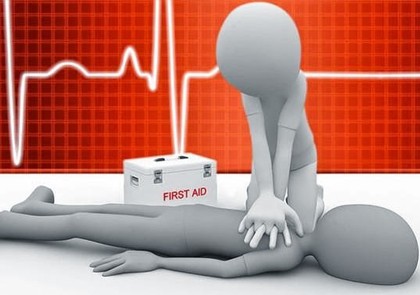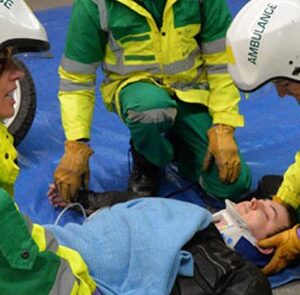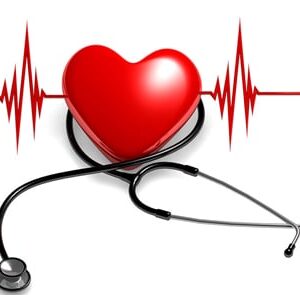Description
This course teaches the essential skills required by an AED operator and gives students the confidence to know how to deal with a cardiac arrest emergency. No previous first aid knowledge is necessary to attend an AED course. At AMBA Training We passionately believe in improving AED access because it has been proven to save lives, In the UK, one person suffers a heart attack every two minutes but the majority could be saved if their heart was shocked back into rhythm. That accounts to approximately 30,000 people sustaining cardiac arrest outside hospital whom are treated by emergency medical services (EMS) each year In the UK. Recent studies have shown that electrical defibrillation is well established as the only effective therapy for cardiac arrest caused by ventricular fibrillation (VF) or pulseless ventricular tachycardia (VT). The scientific evidence to support early defibrillation is overwhelming; the delay from collapse to delivery of the first shock is the single most important determinant of survival. If defibrillation is delivered promptly, survival rates as high as 75% have been reported. The chances of successful defibrillation decline at a rate of about 10% with each minute of delay; basic life support will help to maintain a shock-able rhythm but is not a definitive treatment. You will be trained on how to use automated external defibrillators (AEDs), this course specially designed for public sector staff, first responders and healthcare professionals responding with an AED outside a hospital. An AED can be used safely and effectively without previous training. However, training should be encouraged to help improve the time to shock. More and more shopping centres, sports grounds, office buildings and hotels have AEDs onsite. Therefore it is in our interests to ensure all your staff, particularly first aiders is trained. Sufficient staff should be trained to enable a first shock to be provided within 3 minutes of collapse anywhere in a hospital. Hospitals should also monitor collapse-to-first-shock intervals and monitor resuscitation outcomes. The RC(UK) advises that untrained employees working in establishments should not be prevented from using an AED if they are confronted with a patient in cardiac arrest. The administration of a defibrillator shock should not be delayed while waiting for more highly trained personnel to arrive. The same principle should apply to individuals whose certified period of qualification has expired. While it is highly desirable that those who may be called upon to use an AED should be trained in their use, and keep their skills up to date, circumstances can dictate that no trained operator (or a trained operator whose certificate of training has expired) is present at the site of an emergency. Under these circumstances no inhibitions should be placed on any person willing to use an AED.
PUBLIC ACCESS DEFIBRILLATION (PAD)
You will be instructed on how to use the AED and how to ensure you minimise interruptions in chest compression. You will also be taught the importance of continuing cardiopulmonary resuscitation (CPR) until the victim starts to show signs of regaining consciousness, such as coughing, opening there eyes, speaking, or moving purposefully and they start to breathe normally.
WHAT IS AN AED?
An AEDs is a sophisticated, reliable, safe, computerised device that delivers electric shocks to victims of cardiac arrest when the ECG rhythm is one that is likely to respond to a shock. the controls are kept to a minimum so that, voice and visual prompts guide rescuers. All modern AEDs are suitable for use by both lay rescuers and healthcare professionals.
All AEDs analyse the victim’s ECG rhythm and determine the need for a shock. The semi-automatic AED indicates the need for a shock, which is delivered by the operator, while the fully automatic AED administers the shock without the need for intervention by the operator. Some semi-automatic AEDs have the facility to enable the operator (normally a healthcare professional) to override the device and deliver a shock manually, independently of prompts. Resuscitation Council (UK).
Further information may be found on the RC(UK) web site.
WHO NEEDS THIS QUALIFICATION?
This course is suitable for anyone working in areas where there may be a high volume of people or who is interested in furthering their emergency aid skills, excellent training for first aiders and nominated first. As a result we may be able to maintain the survival rate from cardiac arrest at 74%.
For any Individual who may feel that by enrolling on a this course will help them develop the skills to help preserve life.
WHY IS THIS TRAINING IMPORTANT?
The number of people whom do not survive cardiac arrest is very high, studies have shown how a delay in administering defibrillation can lead to a decline in success , so it makes sense to undertake training to counteract this imbalance. AED training can help educate individuals and businesses, by teaching how to administer properly. Recent strategies have shown:-
• When AEDs are installed in public places and used by people working nearby. Impressive results have been reported with survival rates as high as 74% with fast response times often possible when an AED is nearby.
Come and Join us at AMBA and save a life today!






Reviews
There are no reviews yet.